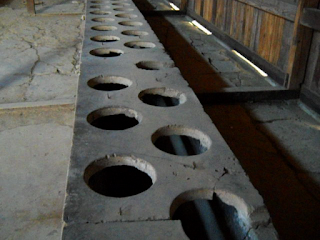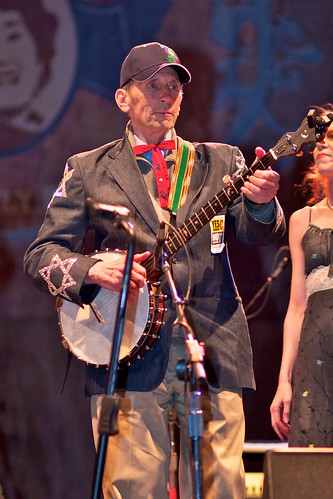By Steve Fox
On January 14, 2012, there is one less Holocaust survivor to tell his story. That was the day that my father, Joseph Fox (A''H) a survivor of the Warsaw Ghetto, a proud Partisan, loving husband, father and grandfather, passed away at the young age of 89. I say young because he was rarely sick and had his full faculties until the very end. He worked until 3 years ago and he could still talk politics and sports with opinionated authority. Fortunately, his illness was short and he did not suffer very much when he died. This was in stark contrast to his youth when, as a 16 year old, he was forced to participate in forced labor groups building the walls of the infamous Warsaw Ghetto and, after escaping the Ghetto, witnessing death and destruction as he and his family hid from the Nazis.
In September of 1942, while he hid in the forest with his brother and father, the Nazis exterminated all of the Jews of Zdzhilovice, Poland, a small farming village near Lublin – including his mother, sister, and 5 cousins, whose bodies were then buried in a mass grave. I asked him how he felt when they returned to the town shortly thereafter and made the grisly discovery. He told me that they didn’t have time to mourn but had to focus on ways to survive. It seems that G-d wanted my father to survive the war and raise a family, despite many close calls and 2 bullet wounds. He emerged from the war a victor and not a victim, having joined the Stalin Brigade of Russian partisans.
He spent the last 2 years of the war blowing up supply lines and attacking Germans in the difficult terrain of the Carpathian Mountains. He once told me that the first time he had a gun and was chasing a Nazi soldier, it was a revelation to him that the soldier was scared of a Jew and could run and bleed just like anybody else. It was this realization that gave him the strength to continue and fight. Having lost both of his parents and a sister, he and his brothers made their way to the United States after the war, where his uncles were already established in the sewing machine business. After working for them for a number of years, he opened his own sewing machine business in the Garment Center and would help some of the biggest designers in the industry such as Halston, Calvin Klein, Anne Klein and many more set up their first shops in New York. He later private-labeled a line of dress forms, which found their ways into factories, colleges and productions for TV and theater.
Despite being a Holocaust survivor, he was determined to give his family a normal life, devoid of the suffering that he endured as a youth. He did not transfer his scars onto us, but he believed very strongly in educating the next generation about the horrors of the Holocaust so that the world would never forget. To that end, he was a board member of the Warsaw Ghetto Resistance Organization (WAGRO) and helped organize New York’s largest Holocaust commemorations for over 40 years. It was at that gathering in April of 2011 that the first of three significant events took place in the final year of his life.
At the commemoration, now organized by the American Gathering of Holocaust Survivors, our family was chosen to light the first of 6 candles to commemorate the Shoah. In the past, they had only allowed one family member to accompany the survivor, but now our entire family joined him on stage. Three generations stood together to show the fruits of his life in America, despite overwhelming odds. Shortly thereafter, he was called by a fellow survivor in Israel, who informed him of the discovery of the mass grave where members of both their families had been killed. Not feeling up to making a long trip, he sent his children and grandchildren in his stead. My brother and I, along with my son, participated in the ceremony along with the Israeli family, 150 Israeli students in Poland for March of the Living, and government officials and students from the village.
 From left to right: a representative of the President of Poland, Steve Fox, The Lasting Memory Foundation founder Zbigniew Nizinski, and Rabbi Michael Schudrich, Chief Rabbi of Poland.
From left to right: a representative of the President of Poland, Steve Fox, The Lasting Memory Foundation founder Zbigniew Nizinski, and Rabbi Michael Schudrich, Chief Rabbi of Poland.In essence, we attended the belated funeral for my father’s family – complete with speeches, Kaddish, and Kail Maale Rachamim, read by the chief Rabbi of Poland. At the end, 200 of us sang Hatikvah in this killing field, showing the Nazis that we have indeed been victorious. After 69 years, my father finally got closure from that terrible part of his life.
In November, just 2 months before he died, he was one of 55 partisans honored at a dinner by the Jewish Partisan Educational Foundation. He was very excited to go and felt happy that partisans like him were being recognized for their courage and strength. At the dinner, he commented to actor Ed Asner, who read out the names of the partisans in attendance during the ceremony in their honor, that it wasn’t easy being a partisan – but it was the only way he could survive. At the end of the evening, when they sang the Partisan Hymn, he appeared to stand taller than his 5’7” frame would allow.
 Joseph Fox with actor Ed Asner at JPEF's Partisan Tribute Dinner on November 7, 2011 in New York City.
Joseph Fox with actor Ed Asner at JPEF's Partisan Tribute Dinner on November 7, 2011 in New York City.To the outside world, my father was a proud survivor and a successful businessman. To us, he was a loving husband, father, and grandfather whose Chesed quietly extended to family and friends. He was successful, had a great sense of humor, and was a smart, well-rounded person. He was my mentor, my friend, my inspiration, and a role model for me and my children. May his memory be a blessing to all of us and may his heroism and compassion be an inspiration to all of Klal Yisrael.
Steve Fox is the president of Fox Marketing and Video Productions in Teaneck, NJ and Co-chair of the Teaneck Holocaust Commemoration Committee. He can be reached at foxy555@aol.com.
 Marko Behar, a talented sketch artist and draftsman (among other mediums), provides us with a unique view into Bulgaria during World War II through his drawings. Behar served as the second commissar of a partisan battalion in the framework of Georgi Dimitrov, who was an international symbol of resistance to Nazism at the time. As such, Behar’s sketches, lithographs, and cartoons reflect partisan and underground life. While he drew moving glimpses of Jewish and partisan life at the time, he also featured caricatures of fascism, such as a cartoon aimed at pro-German authorities in Bulgaria.
Marko Behar, a talented sketch artist and draftsman (among other mediums), provides us with a unique view into Bulgaria during World War II through his drawings. Behar served as the second commissar of a partisan battalion in the framework of Georgi Dimitrov, who was an international symbol of resistance to Nazism at the time. As such, Behar’s sketches, lithographs, and cartoons reflect partisan and underground life. While he drew moving glimpses of Jewish and partisan life at the time, he also featured caricatures of fascism, such as a cartoon aimed at pro-German authorities in Bulgaria.








































